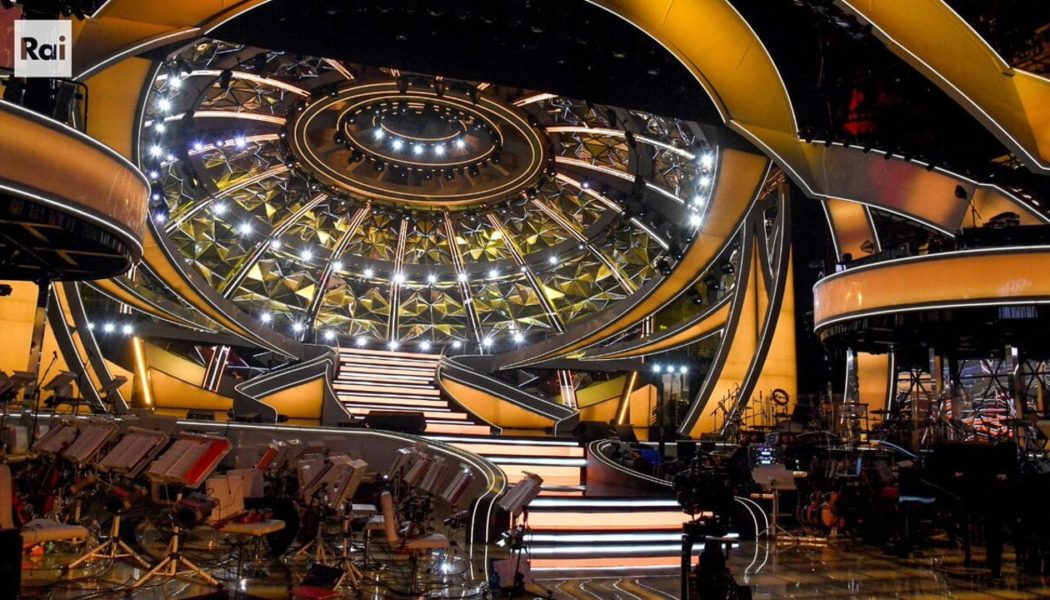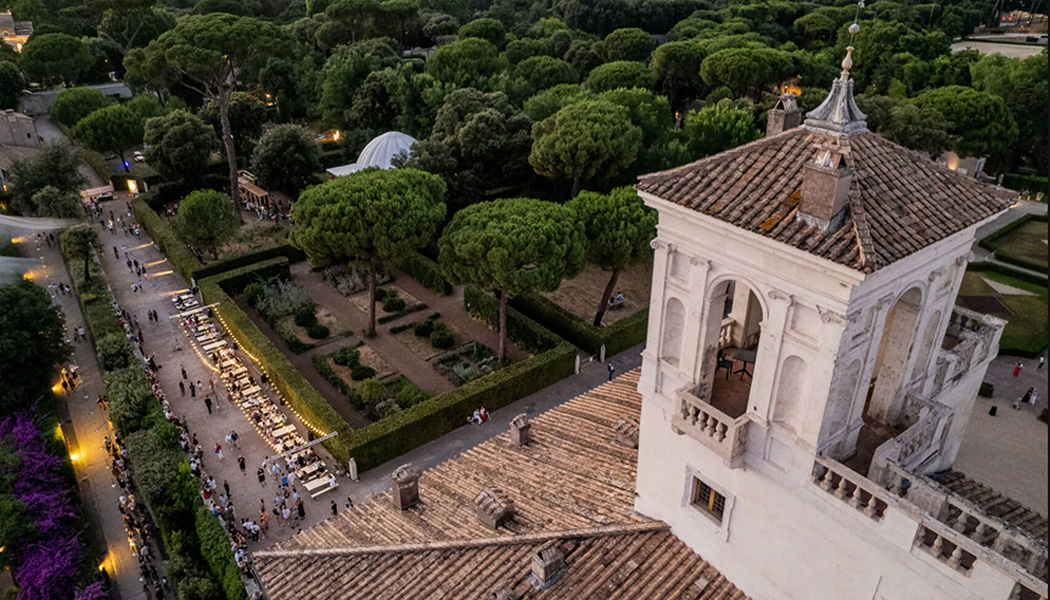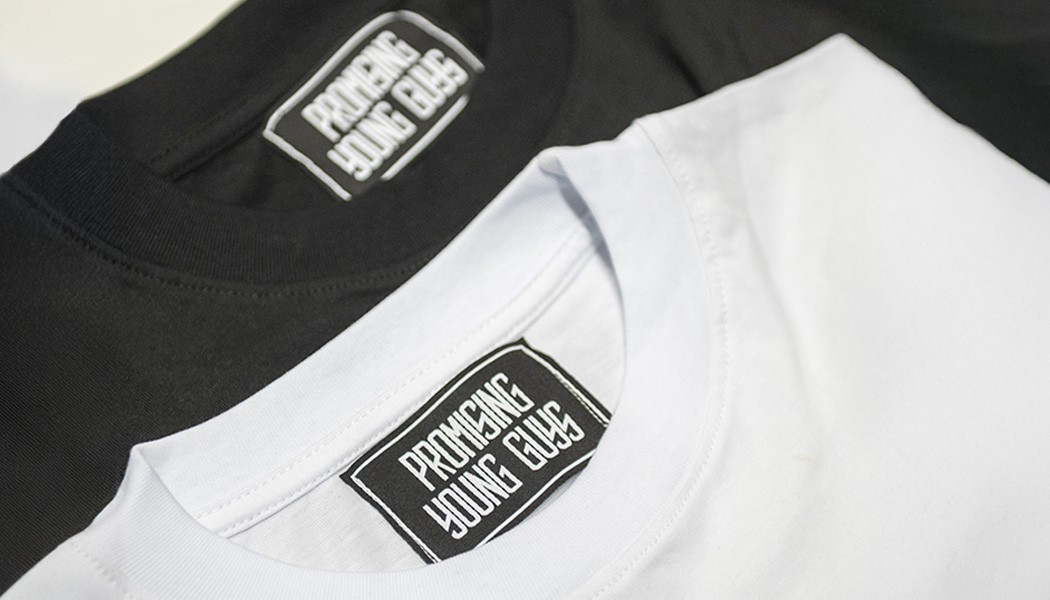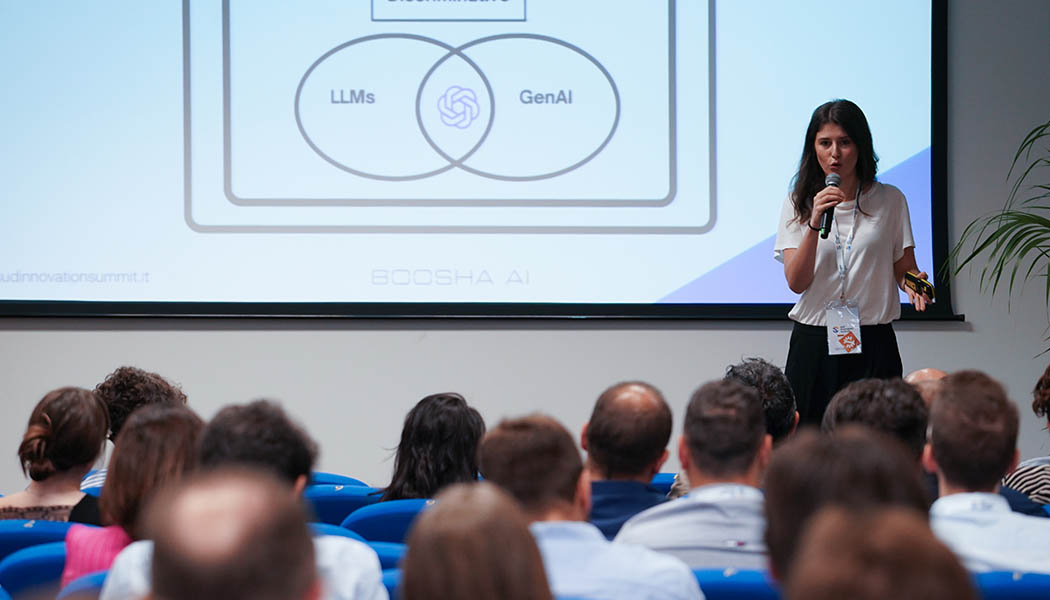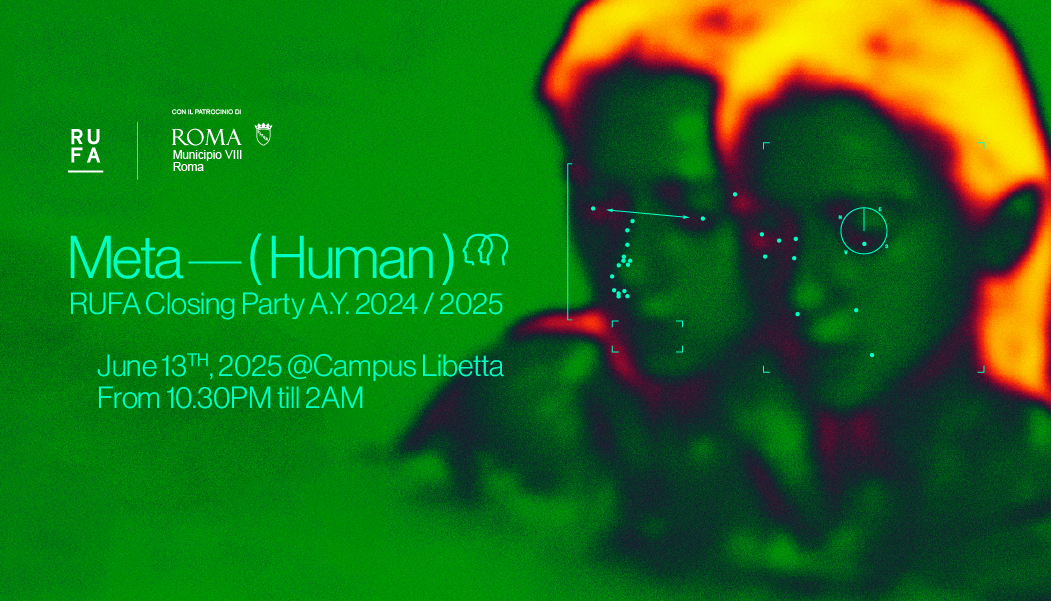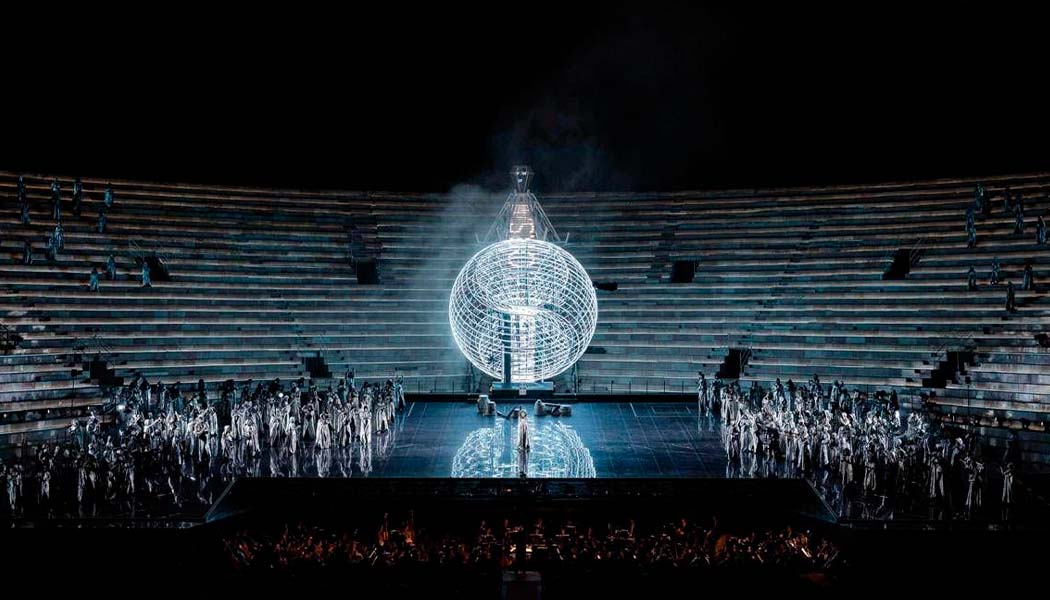The set design of the highly anticipated 73rd Sanremo Festival is signed by father and daughter, Gaetano and Maria Chiara Castelli – RUFA lecturer of Set design – and the whole of Italy’s attention is focused on the Ariston stage topped by a giant luminous dome.
“This year, for the Festival, we thought of building a special ‘sky’, returning to the pleasure of ‘built’ scenic architecture, accepting all its challenges”..
A suspended elliptical dome, but closely connected to the rest of the set design, twenty-one metres wide and up to eleven metres high. It has ‘secret mirrors’ and a movable top, with perfectly integrated lights, that descends above the performers on stage.
To comply with the philosophy of a three-dimensional, scenic architecture, the two set designers chose to dispense with the traditional ledwalls, while the staircase and the orchestra’s side spaces remain to emphasise the centrality of the artists, with the return of the curtain.
Everything is ‘wrapped’ in white and entrusted to the eye of director Stefano Vicario and the lights of director of photography Mario Catapano, who will also have at his disposal six kilometres of dynamic LEDs.
The structure, specifically requested from the set designers by Sanremo Festival host Amadeus, is inspired by important domes in the history of Italian architecture such as the Pantheon in Rome, Castelli’s home city.
The luminous dome, suspended on twenty-four motors, also has a movable top, with integrated lights, allowing the structure to descend onto the stage and create a special sky over presenters, singers and guests on the Ariston stage. In addition to the stage, the rest of the set design will be dominated by curved lines that – for the first time – will also ‘dress’ the stalls of the Ariston Theatre: “It will be a way – add Gaetano and Maria Chiara Castelli – to extend the stage in the theatre, obtaining the effect of enlarging the space, without reducing the number of seats in the stalls, indeed, recovering some rows”.
Work on the set design began immediately after the summer, while assembly in Sanremo got underway in December:
“It was great,” the set designers conclude, “to see the birth and growth of what we like to call our ‘architecture’ of Sanremo, for which our thanks go to our collaborator Manuele Bellucci and all the exceptional set and lighting professionals who made our project a reality.”.
